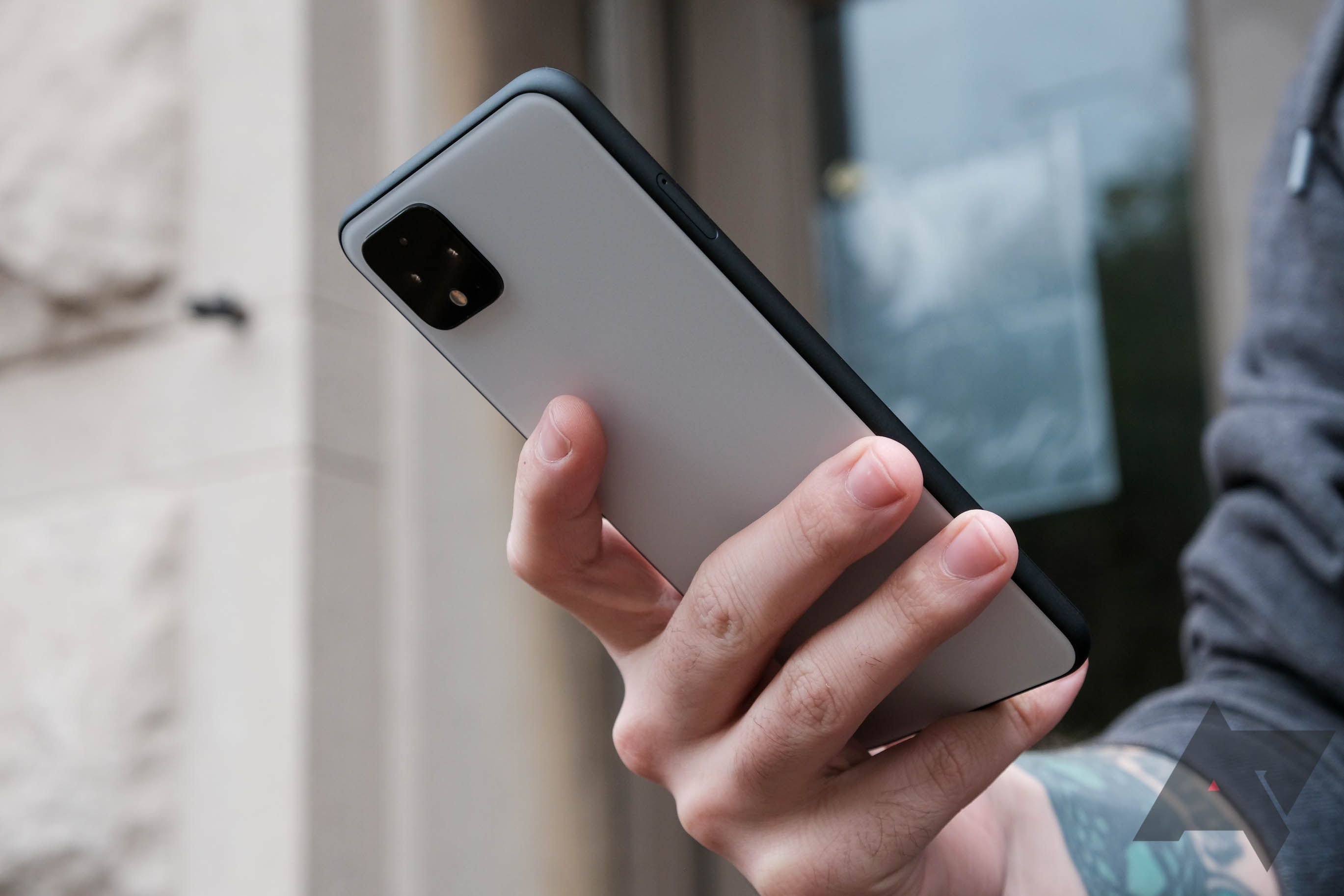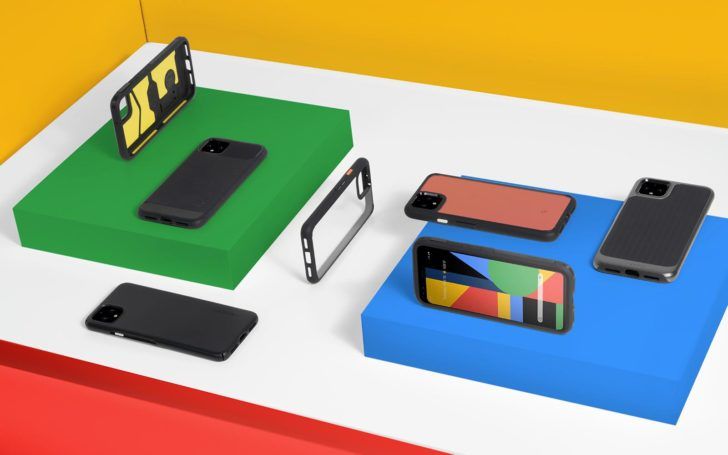A lot is riding on Google's Pixel 4. Last year's Pixel 3 didn't sell well, to put it lightly, and we've made it clear that the phones need to grow up when it comes to the historical laundry list of issues that seem to debut with each new model. While you'll need to wait a bit longer for our full, embargo-bound assessment, we have some preliminary thoughts about Google's latest phone.
A message from our sponsor
Introducing Spigen’s newest Pixel 4 and 4 XL case lineup — tailored to best fit your style and protection needs. From the exciting new details in style, to the extra protection packed into the slim frame, Spigen delivers the quality and slim protection it is known for.
Whether you are a minimalist who loves a simple look, a lover of style who values detailing, or a dropper who needs the most protection, whatever the case may be, Spigen has a case that is perfect for you. Check out Spigen’s Pixel 4 and 4 XL lineup right now.
Changing design language
Google's industrial design has changed since the original Pixel landed in 2016, but this is still identifiably a phone within the lineage. I'll miss the two-tone/texture back the devices had up until this year, but I'm enjoying the return to more "fun" shades with the Oh So Orange limited edition, though I'd really like to see more colors land over time (with less of a Halloween theme).
Initial leaks showing the phone's large forehead bezel raised feelings of consternation from many, but it is the sort of thing you notice once and forget — unlike the Pixel 3 XL's notch. It isn't as objectively beautiful as the nearly all-screen designs in the Note10 or OnePlus 7 Pro, and the bottom bezel is larger than it is on either of those devices, but it fades into the background the first time you pick it up, much as your own fingers holding the phone do. You probably won't notice it, apart from a bit of asymmetry using the phone in landscape.
Any objection to the design is further mitigated by the materials themselves. The black frame has a pleasant roughness to it, feeling something like a cross between an eggshell and wrinkle-finish paint. It's a texture that blends into without precisely matching the matte glass back of the white and orange models (which I strongly preferred to the glossy, fingerprint-prone black color). Both 4 and 4 XL feel a little more substantial and heavier than the previous 3 and 3 XL.
No notches here
On the front again, both phones feature flat screens — no curved edges here. They're both ever-so-slightly taller in aspect ratio as well, at a matching 19:9 this time. Google was mum on the details when we asked about screen manufacturers for the two phones, but our initial impressions this time around are good, especially when comparing the smaller phone to last year's. If this is an LG screen, then LG can finally make decent ones.
That's not to say "good" will ultimately compare too well with other flagships. You'll have to wait for our full review for our final opinion, but on an early note, Displaymate pegs the Pixel 4 as maxing out somewhere around 450 nits. In high ambient light like the harsh and direct outdoor sun, that's a struggle. In comparison, Samsung's Note10+ hits 778-1257 nits outdoors, a substantial difference. That "visually indistinguishable from perfect" blurb Google was quick to champion about the screen's color calibration is a pretty common rating these days, too.
Face unlock
Right off the bat, we've got differing opinions about Google's new biometric system here at Android Police. While you'll have to wait for the final review for our full thoughts, know that at least some of us are already missing the old fingerprint sensor.
While face unlock is convenient and relatively fast, in many situations, it isn't quite so speedy as the old tried-and-true method. Not having it as an alternative or backup outside the anachronistic pin/password feels like Google might be placing all its eggs in one basket as it blindly follows a specific company's influence.
That said, most of the time it's like it isn't there at all — in an almost Apple-like sense, it just works.
Is Motion Sense a gimmick?
While the benefits of face unlock are pretty clear (and we'll go into more detail in our final review), the new radar-based Motion Sense system requires more of a hard sell.
...it's the software that makes the Pixel experience.
You might remember that LG tried something similar with the G8 Thinq. We called it "plagued" and a "chore" at the time. It's debatable whether the similar functionality provided by the Pixel 4 is really a value-add in the abstract, even if it were executed perfectly — and we're also divided about that here at Android Police. Just trying to get Pikachu to wave back at me from the exclusive Pokémon-themed background was more than a little frustrating. Are we even sure we want to fling our arms around for music controls?
The jury is still out, but in my preliminary time with the phone, Motion Sense's controls haven't provided any real benefit, apart from helping to turn on the display when reaching for it, frustrating me when they aren't available/don't work, and distracting me with the frequently off-center halo effect along the top of the display when in media apps like Spotify.
Too early to judge
All these initial thoughts about the new features and hardware are important, and we haven't even touched on more elementary subjects like battery life or performance, but we know from experience they're only part of the equation. You can take a look at our camera samples here, and we'll be holding our final assessment on the camera for later, but between photo processing, Assistant features, and Pixel-specific Android tweaks, Google's phones are more about software than the specs that power it, and it will take more time to develop our full thoughts on that subject.
We're still struggling to test a few things (right now the new Assistant has a few incredibly frustrating requirements that have prevented any of us at Android Police from using it) but Google definitely hasn't forgotten when it comes to the new Pixel 4 that it's the software that makes the Pixel experience.
There's still plenty left to discuss, and our opinion here at Android Police isn't set yet. But we raised a very clear question here that we haven't answered: Should you pre-order the Pixel 4 or not? The new phones aren't set to ship until October 24th — six days from now. While the "Oh So Orange" color is set to be a limited edition, perhaps it's good to remember you should be able to buy a Pixel 4 just as easily later without making any commitment right now.


